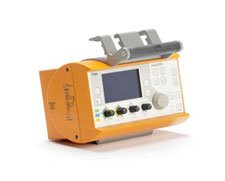
Categorised under:
Anaesthesia
>
Ventilators
>
Transport ventilators

Did you know you can Register for FREE with this website?
Registration gives you full access to all of the features of WhichMedicalDevice. Find out more ...
WhichMedicalDevice is a FREE resource created by clinicians for clinicians.
Registration is free and gives you unlimited access to all of the content and features of this website.
Find out more...Registration is free and gives you unlimited access to all of the content and features of Which Medical Device. Find out more...
Which Medical Device is a community of clinicians sharing knowledge and experience of the devices and procedures we use on a daily basis. We ask that our members register with us so that we can maintain the unbiased and independent nature of our content. Registration is quick and free.
We do not make your details available to any third parties nor do we send unsolicited emails to our members. You can read our Privacy Policy here.
Comments
Comment by Jeremy_Hyams Commented Jan 18, 2013
Impact factor: 112
User Rating
I?ve used the Oxylog 3000 for the past 6 years as a transport ventilator on invasively & non-invasively ventilated patients and been very happy with it.
Drager have been manufacturing transport ventilators since 1978, and this version of the Oxylog seems to fulfil pretty much all the requirements of a transport ventilator. I?ve been using the Oxylog 3000 for the past 6 years when transferring invasively ventilated patients around the various hospitals / region I?ve worked in, and been very satisfied with the functions provided.
As with most Drager ventilators, selecting different modes of ventilation and adjusting the ventilatory parameters is fairly intuitive ? the modes provided on this ventilator are CPAP +/- ASB, IPPV, SIMV +/- ASB & BIPAP +/-ASB, and the pressure settings / alarm limits can be adjusted through menus on the screen, as with a conventional Drager ventilator, or through a number of dials on the front of the machine. There is even an option for an inspiratory hold, though I?ve not yet found a need for that on a transfer.
As with the Drager Primus, this machine can ventilate anyone from fairly small infants to morbidly obese adults with just a few simple changes in settings ? the tidal volume settings start at 50ml up to 60 times per minute and can go up to 2,000ml, and the oxygen setting ranges from 40% up to 100%.
A fully charged battery will give you up to 4 hours of use, and an adaptor with a 3-pin plug is provided for when longer transfers are anticipated. Fortunately the ambulances in my region are equipped with 3-pin plug sockets on board and can power these ventilators in transit, but this would be worth checking in your region. Typical oxygen consumption on this ventilator is fairly low, in the order of 4-5 litres per minute in an average-sized patient on 100% O2, so running out of Oxygen on a transfer is unlikely.
The only concerns I have with this ventilator surround the breathing circuit ? there is an option of a disposable circuit which works well, but the reusable circuit sometimes has issues with the expiratory valve when returned from sterilisation. If this valve is not seated exactly where it should be, or if it is replaced upside down in the circuit by the cleaning staff (not as hard to do as it sounds), the ventilator will not deliver any gas to the patient. There are times when I have witnessed teams connecting patients to the ventilator and they have not realised that the patient is not being ventilated. Unless you are aware of this particular fault, it can be hard to work out why the ventilator does not appear to be working.
The updated version of the Oxylog 3000 (the ?3000 Plus?) has options for non-invasive ventilation (NIV) and also has a built-in capnograph. However, the wisdom of transferring a patient who was on NIV (with the risks of needing intubation en-route) is debateable, and as most transfer monitors already contain capnographs, these extra functions may not be as useful as they first appear. I?ve been very happy with the service provided by the 3000, and aside from the patients on NIV, it is unusual to find a patient needing a transfer with ventilatory requirements that cannot be met by this ventilator.